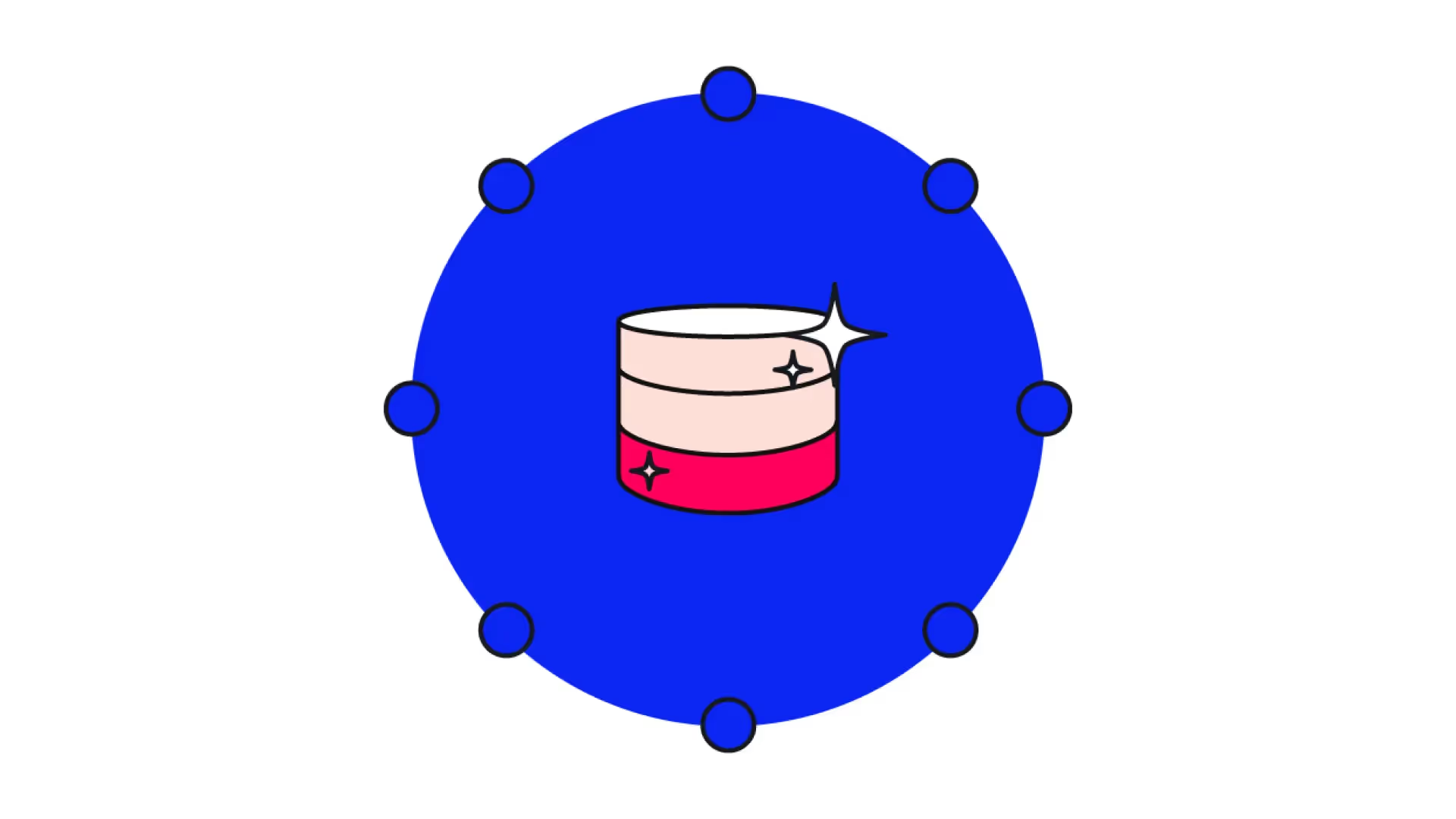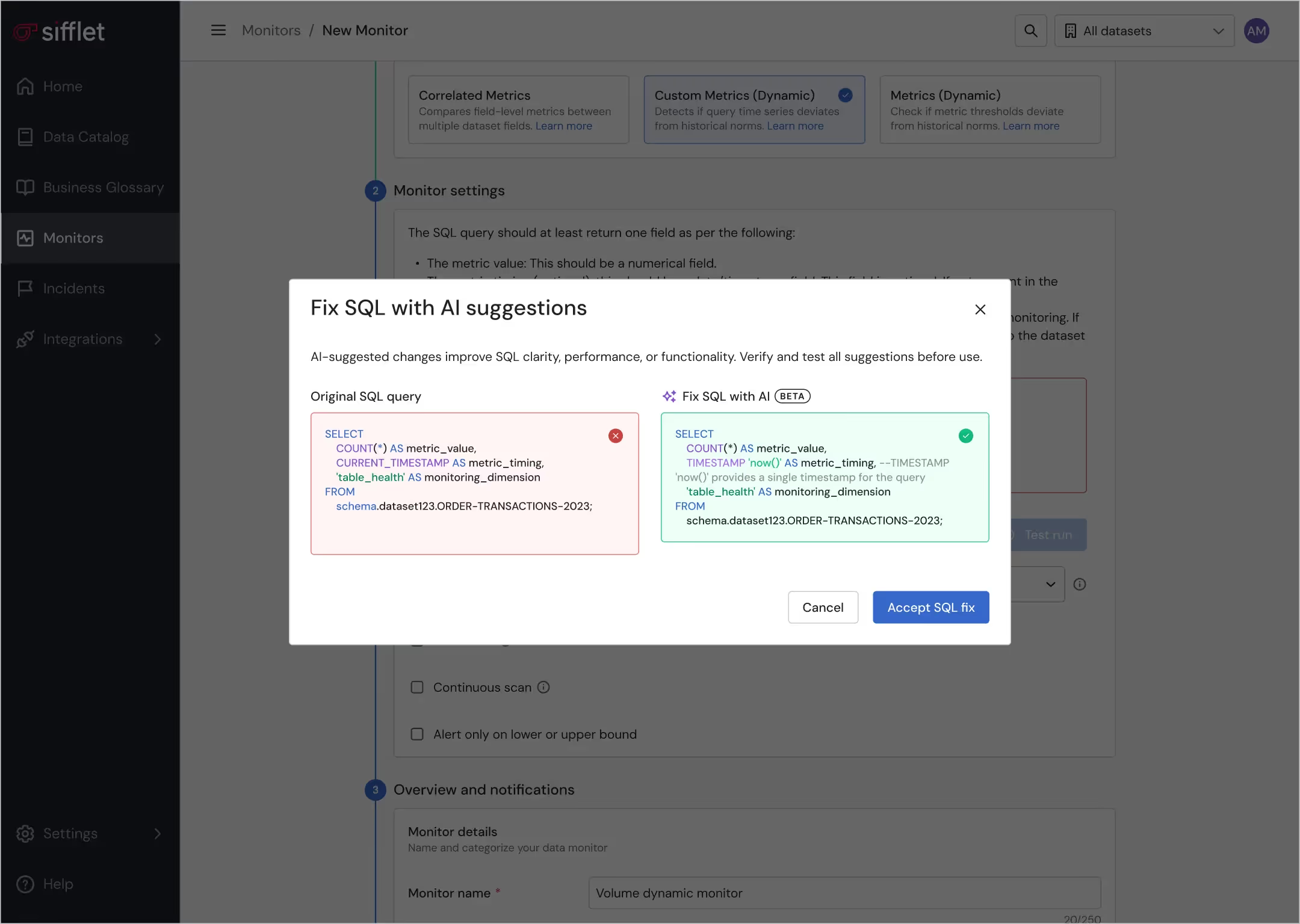Make data quality everyone’s business
Enable real-time accessibility to data quality metrics throughout the entire organization, catering to both technical and non-technical users.















Streamlined monitoring experience
- Collect assets spanning the entire data lifecycle thanks to built-in integrations
- Enable non technical users to create business-informed monitors thanks to an intuitive UI and to the Sifflet AI Assistant

Improved information accessibility
- Access assets’ health status through the Data Catalog and lineage for de-risked data self-service
- Get notified of upstream incidents directly on BI tools via a browser extension















Still have a question in mind ?
Contact Us
Frequently asked questions
How did Adaptavist reduce data downtime with Sifflet?
Adaptavist used Sifflet’s observability platform to map the blast radius of changes, alert users before issues occurred, and validate results pre-production. This proactive approach to data pipeline monitoring helped them eliminate downtime during a major refactor and shift from 'merge and pray' to a risk-aware, observability-first workflow.
What role does metadata play in a data observability platform?
Metadata provides context about your data, such as who created it, when it was modified, and how it's classified. In a data observability platform, strong metadata management enhances data discovery, supports compliance monitoring, and ensures consistent, high-quality data across systems.
Can Sifflet help with root cause analysis when there's a data issue?
Absolutely. Sifflet's built-in data lineage tracking plays a key role in root cause analysis. If a dashboard shows unexpected data, teams can trace the issue upstream through the lineage graph, identify where the problem started, and resolve it faster. This visibility makes troubleshooting much more efficient and collaborative.
How can data observability support a strong data governance strategy?
Data observability complements data governance by continuously monitoring data pipelines for issues like data drift, freshness problems, or anomalies. With an observability platform like Sifflet, teams can proactively detect and resolve data quality issues, enforce data validation rules, and gain visibility into pipeline health. This real-time insight helps governance policies work in practice, not just on paper.
What are the main differences between ETL and ELT for data integration?
ETL (Extract, Transform, Load) transforms data before storing it, while ELT (Extract, Load, Transform) loads raw data first, then transforms it. With modern cloud storage, ELT is often preferred for its flexibility and scalability. Whichever method you choose, pairing it with strong data pipeline monitoring ensures smooth operations.
Can Sifflet support SLA compliance and data governance goals?
Absolutely! Sifflet supports SLA compliance through proactive data quality monitoring and real-time metrics. Its deep metadata integrations and lineage tracking also help organizations enforce data governance policies and maintain trust across the entire data ecosystem.
How did Sifflet help reduce onboarding time for new data team members at jobvalley?
Sifflet’s data catalog provided a clear and organized view of jobvalley’s data assets, making it much easier for new team members to understand the data landscape. This significantly cut down onboarding time and helped new hires become productive faster.
How does Sifflet help with data discovery across different tools like Snowflake and BigQuery?
Great question! Sifflet acts as a unified observability platform that consolidates metadata from tools like Snowflake and BigQuery into one centralized Data Catalog. By surfacing tags, labels, and schema details, it makes data discovery and governance much easier for all stakeholders.
Get in touch CTA Section
Lorem ipsum dolor sit amet, consectetur adipiscing elit, sed do eiusmod tempor incididunt ut labore et dolore magna aliqua.













-p-500.png)
